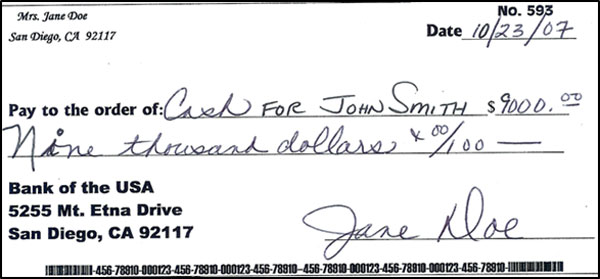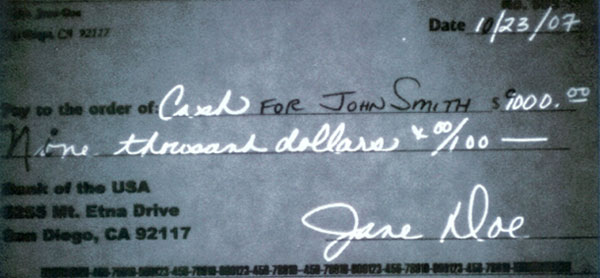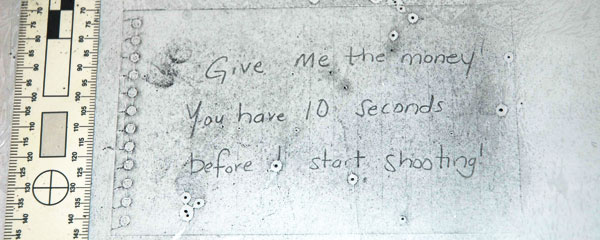Why and when is forensic document examination used?
Since documents are part of daily life, forensic document examiners work a wide variety of cases. Forensic document examiners are called to investigate the authenticity of documents in situations such as:
- forgeries
- counterfeiting
- identity theft
- fraud
- suicides
- homicides
- bank robberies
- kidnappings
- extortion
- stalking
- contested wills
- contested contracts
- medical malpractice
- title/deed lawsuits
Forensic document examiners are most frequently asked to resolve questions of authorship. Is the signature on the mortgage loan genuine? Who wrote the anonymous note? Did the deceased sign the will? By comparing documents found at a crime scene to a suspect’s known writing samples, the forensic document examiner can help confirm who wrote the note and include or exclude suspects from the investigation.
Ransom Note Nabs Kidnapper
A 1956 kidnapping case from Long Island, New York, helps illustrate the key role forensic document examination can play in an investigation. In this case, a one-month-old child was taken from his home and a ransom note was found in the baby’s carriage, supposedly left by the child’s babysitter. Investigators discovered distinguishing characteristics in the way the writer formed 16 letters of the alphabet, most notably the lowercase “m”, which resembled a sideways “z”. Investigators searched through nearly two million documents looking for similar writing until a probation officer found in his files documents written by a 31-year-old auto mechanic with the same peculiar “m”. Document examiners were able to conclusively match the ransom note to the suspect’s handwriting, helping to secure a conviction.
Fraudulent Checks
A common problem brought to forensic document examiners involves alterations, especially to legal documents. For instance, if someone altered a check to increase its amount, examiners may be able to determine this by comparing the way the inks from different pens react when subjected to infrared radiation.
In the example below, a check made out to “Cash” for $1,000 has been altered by changing the “1” to a “9” and adding a recipient’s name. Although the black inks appear the same in visible light, when subjected to certain frequencies of infrared light, the ink used to prepare the genuine check reacts differently than the ink used to alter the check, making the alteration obvious.

Altered check written in black ballpoint pens when viewed with visible light (Courtesy of Marie Durina)

Same altered check viewed with infrared radiation (Courtesy of Marie Durina)
Documents in a suspect’s possession may also reveal clues from hidden impression evidence (also known as indented writing) that could link a suspect to a crime. For instance, did the bank robbery suspect write the hold-up note on top of another piece of paper that now contains impression of that text?

A notebook found with suspect’s personal effects. (Courtesy of Marie Durina)

The same notebook when analyzed with an Electrostatic Detection Device (EDD) reveals invisible impressions of the robbery demand note. (Courtesy of Marie Durina)
Examiners can also identify the materials, inks and even the type of office equipment or writing implements used to produce the document. This is especially useful in fraud cases because these details can identify the time frame in which a document was created. For instance, if analysis of the document’s paper reveals a substance that was not used in paper manufacturing during the time frame in question, the document, piece of art, or historical record would be demonstrated to be fraudulent.